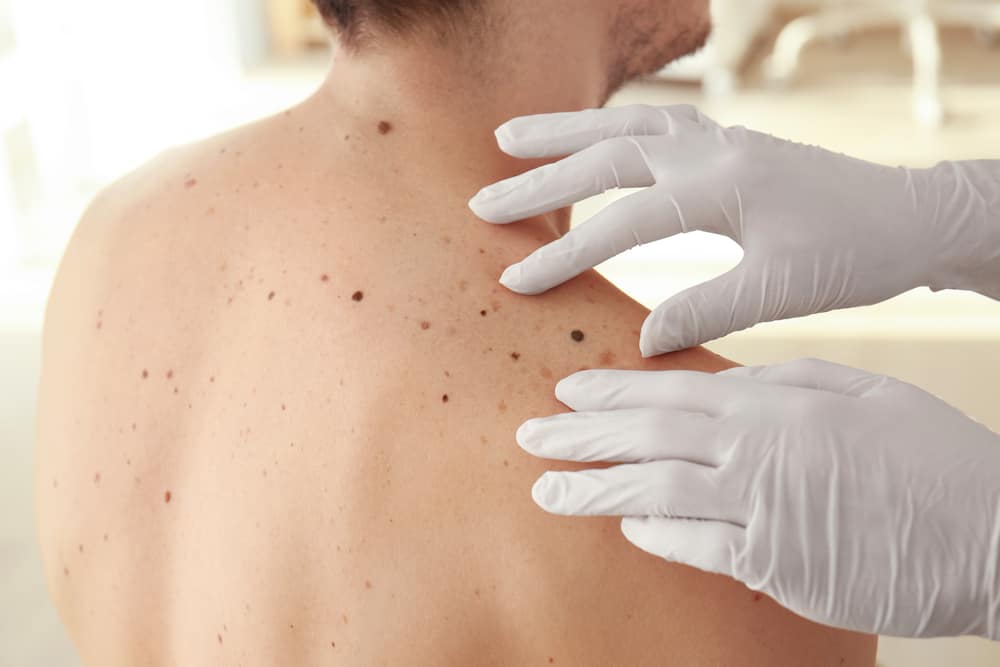Contents:
- Medical Video: Battling Melanoma: Brooke Wilson Shares Her Story
- Overview of melanoma skin cancer
- So, can melanoma skin cancer be lowered in the family?
- Need a genetic test to determine the risk of melanoma cancer?
Medical Video: Battling Melanoma: Brooke Wilson Shares Her Story
Cancer is one of the most life threatening health problems. One reason is genetic or hereditary factors. Yes, when there is one family member who has cancer, you may be at greater risk of developing the same cancer. However, does this also apply to melanoma skin cancer? Here's the explanation.
Overview of melanoma skin cancer
Cancer occurs when normal cells in the body develop abnormally and uncontrollably. Well, this can also occur in skin cells.
Melanoma is one type of skin cancer that appears when cells of melanocytes (pigment producing cells) grow abnormally into cancer. This is marked by the appearance of a mole characteristic of cancer suddenly, usually brown or darker than the color of the surrounding skin.
Although quite rare, melanoma skin cancer can spread faster and cause serious problems in other organs. In both women and men, most melanomas appear on the neck, face, chest, back, even in the eye (ocular melanoma).
The main cause of the appearance of melanoma is exposure to excessive sun on the skin. However, this is also determined by each person's skin type. Risk factors for melanoma skin cancer will increase in white people and have brightly colored real hair. This is why, skin cancer is more common in white descendants (Caucasian race).
So, can melanoma skin cancer be lowered in the family?
Reporting from Verywell, experts are still investigating the influence of genes from families on the occurrence of melanoma. So far, they revealed that genetic factors only accounts for one percent of all cases of melanoma.
There are three genes known to be related to melanoma skin cancer, including the following:
- CDKN2A: CDKN2A gene is the most common cause of inheritance of melanoma skin cancer in the family. This gene causes the syndromefamilial atypical mole-melanoma (FAM-M) or hereditary melanoma cancer. However, not all cases of melanoma are caused by mutations in the CDKN2A gene.
- MC1R: A number of studies have proven that the MC1R gene (melanocortin-1 receptor) can increase the risk of melanoma. This gene causes a person to have red hair, brightly colored skin, and skin that is sensitive to ultraviolet (UV) radiation.
- MDM2: The MDM2 gene functions to determine how much cell division is due to cancer. MDM2 gene mutations are more common in women with melanoma skin cancer aged 50 and under. In fact, the mutation of this one gene is more likely to develop melanoma than sun exposure.
So, it can be concluded that melanoma can be caused by hereditary factors that have genes that cause melanoma. This certainly cannot be prevented in any way, except with treatment as soon as possible.
Need a genetic test to determine the risk of melanoma cancer?
After knowing that one family member has melanoma, you certainly don't want to get the same disease and immediately seek prevention. For starters, you might be wondering whether you need a genetic test or not.
Genetic tests function to find out how much changes in genes in the body can increase the risk of certain diseases, including melanoma. Genetic tests for melanoma are highly recommended if you:
- Has three or more cancers of melanoma that grow on the surface of the skin
- Have a lot of suspicious moles, irregular shape, and dark brown or black
- Have two or more family members who have melanoma or pancreatic cancer
The results of a positive melanoma genetic test can help doctors monitor the development of skin cancer in your body. Patients who are at high risk of melanoma certainly need a further skin examination to confirm the diagnosis.
However, if the test results are negative, you cannot feel free from melanoma. To reduce the risk of melanoma skin cancer, protect your skin from excessive sun exposure and do regular skin health checks.















